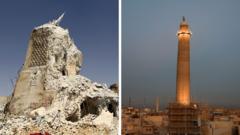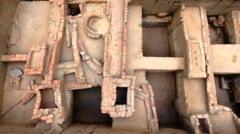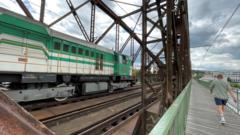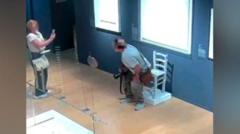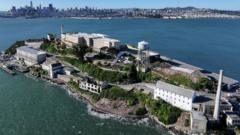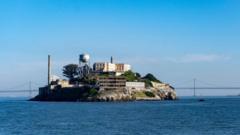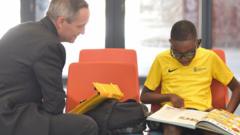The renowned Iraqi city of Mosul, ravaged by the violence and destruction wrought by the Islamic State (IS) from 2014 to 2017, is beginning to rise from the ashes through a remarkable restoration project funded by UNESCO. This comprehensive plan aims to revitalize both the physical landmarks and the communal spirit that once thrived in this culturally rich city.
On Wednesday, UNESCO’s director-general Audrey Azoulay attended a reopening ceremony that welcomed local artisans, community members, and representatives from various faiths to celebrate the revival of the city. Mosul had long served as a beacon of coexistence among diverse ethnic and religious groups until IS imposed its violent regime, leading to immense suffering, including the tragic destruction of historic sites like the iconic al-Hadba minaret and al-Nuri mosque.
The liberation of Mosul, heavily militarized and supported by a U.S.-backed coalition, left behind a battlefield strewn with ruins and loss. Local photographer Ali al-Baroodi, reflecting on his return in 2017, described witnessing the city as a “ghost town,” haunted by remnants of destruction and grief.
UNESCO has managed a $115 million budget for the restoration, largely sourced from the United Arab Emirates and the European Union. The project has emphasized community involvement, with efforts by individuals like Father Olivier Poquillon, who is fostering collaboration among diverse groups to rebuild both trust and structures.
The initiative has trained over 1,300 young people in traditional crafts and created approximately 6,000 jobs. Among the milestones, churches like al-Tahera have been fully restored, resuming a vital role in the community’s life, with church bells once again sounding throughout Mosul.
Residents, including families of long-standing heritage, express joy and nostalgia as they return to homes that have stood since the 19th century. The sense of rebirth is palpable as they reclaim their lives amidst the backdrop of ongoing conflict and recovery efforts.
Despite the wounds of the past, the spirit of Mosul is finding its way back from despair. As al-Baroodi poignantly puts it, witnessing this restoration is akin to “seeing a dead person coming back to life,” encapsulating the city’s journey toward healing and revival.
On Wednesday, UNESCO’s director-general Audrey Azoulay attended a reopening ceremony that welcomed local artisans, community members, and representatives from various faiths to celebrate the revival of the city. Mosul had long served as a beacon of coexistence among diverse ethnic and religious groups until IS imposed its violent regime, leading to immense suffering, including the tragic destruction of historic sites like the iconic al-Hadba minaret and al-Nuri mosque.
The liberation of Mosul, heavily militarized and supported by a U.S.-backed coalition, left behind a battlefield strewn with ruins and loss. Local photographer Ali al-Baroodi, reflecting on his return in 2017, described witnessing the city as a “ghost town,” haunted by remnants of destruction and grief.
UNESCO has managed a $115 million budget for the restoration, largely sourced from the United Arab Emirates and the European Union. The project has emphasized community involvement, with efforts by individuals like Father Olivier Poquillon, who is fostering collaboration among diverse groups to rebuild both trust and structures.
The initiative has trained over 1,300 young people in traditional crafts and created approximately 6,000 jobs. Among the milestones, churches like al-Tahera have been fully restored, resuming a vital role in the community’s life, with church bells once again sounding throughout Mosul.
Residents, including families of long-standing heritage, express joy and nostalgia as they return to homes that have stood since the 19th century. The sense of rebirth is palpable as they reclaim their lives amidst the backdrop of ongoing conflict and recovery efforts.
Despite the wounds of the past, the spirit of Mosul is finding its way back from despair. As al-Baroodi poignantly puts it, witnessing this restoration is akin to “seeing a dead person coming back to life,” encapsulating the city’s journey toward healing and revival.

